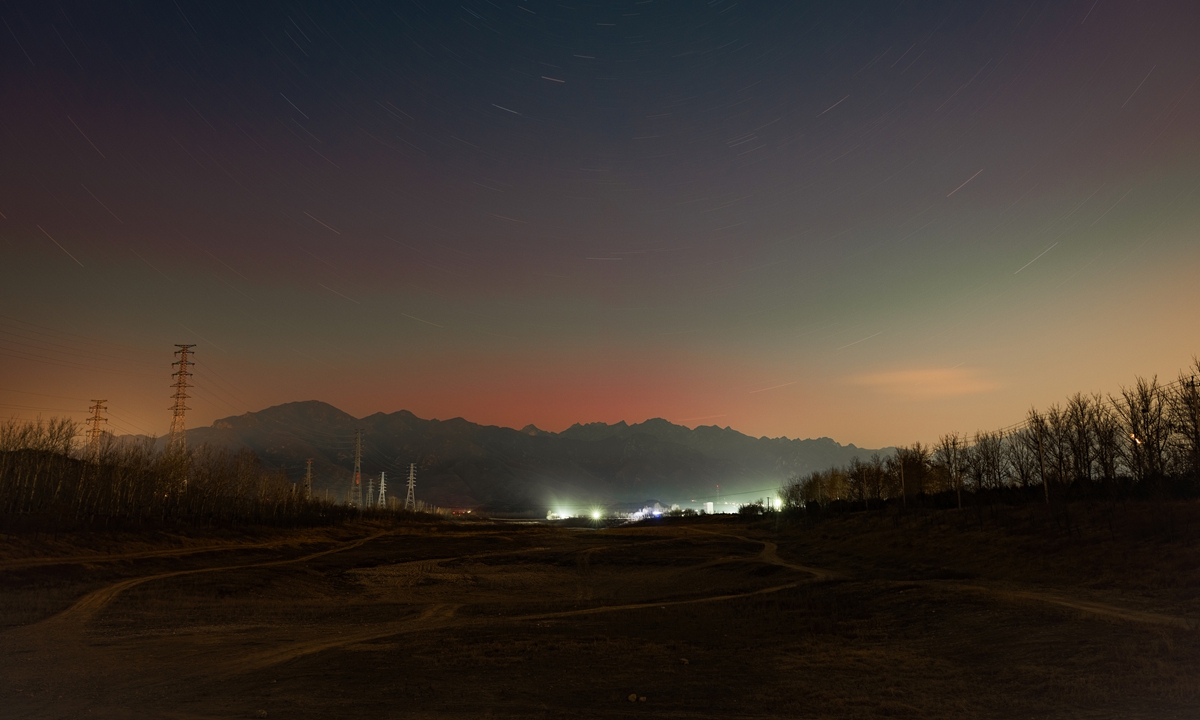
Photo: CFP
Surprisingly, on Friday night, many people in the outskirts of Beijing witnessed the aurora borealis. This is the second time the Chinese capital, located at 40 degrees north latitude, has reported the occurrence of the aurora borealis, according to media reports.
On Friday night, the auroras appeared in many high-latitude areas of China, including Northeast China's Heilongjiang and North China's Inner Mongolia. According to photos taken by astronomy enthusiasts, as the night sky was illuminated by red lights.
Nonetheless, what surprised people the most was that auroras were also observed in Beijing, a lower latitude area. Observers in Beijing's suburban areas Huairou and Mentougou districts reported seeing the auroras.
According to China National Geographic Channel, this is the second recorded aurora sighting in Beijing's history. The last time auroras appeared in Beijing was 20 years ago in 2003, according to media reports.
The occurrence of auroras is due to solar charged particle streams (solar wind) entering the Earth's magnetic field. Influenced by the geomagnetic field, these high-energy particles are directed towards the polar regions. The luminous phenomenon is caused by collisions between these particles and atoms in the upper atmosphere near the Earth's north and south poles.
Due to the relatively low geomagnetic latitude in China, even when there is strong geomagnetic activity, it is difficult to observe obvious aurora phenomena, according to China Weather Network on Friday night.
However, auroras often occur at altitudes of 100 kilometers or even 300 to 400 kilometers, which is high enough to cross over thousands of kilometers of horizon. Therefore, it is possible to see auroras in the far northern regions of China under suitable conditions, China Weather Network, a website operated by China Meteorological Administration said on Friday. Observing auroras in Beijing is described as "very lucky."
According to reports, the observation of auroras in many northern regions of China this time was due to geomagnetic storm activity.
Although auroras are commonly seen in high latitudes, the range of aurora occurrence can expand if geomagnetic storms are particularly strong. According to records, during intense geomagnetic storms, auroras can even be visible in equatorial regions. Therefore, it is possible to see auroras in Beijing, which is located at a latitude of 40 degrees, said Zhu Jin, a researcher at the Beijing Planetarium and editor-in-chief of the magazine Amateur Astronomer, as reported by Red Star News on Friday.
According to Zhu, there were reports of auroras observed in Beijing's Pinggu district in 2003.
On Thursday, the National Space Weather Monitoring and Early Warning Center of the China Meteorological Administration issued a geomagnetic storm warning, forecasting the possibility of geomagnetic storm activity from Thursday to Saturday. It was forecast that on Friday, a moderate to severe geomagnetic storm, or even a severe geomagnetic storm, may occur, with geomagnetic activity expected to continue until Saturday.
Zhu noted that geomagnetic storms can have an impact on shortwave communication, but due to their relatively short duration, the impact on the human body is minimal and can be ignored.
Global Times




